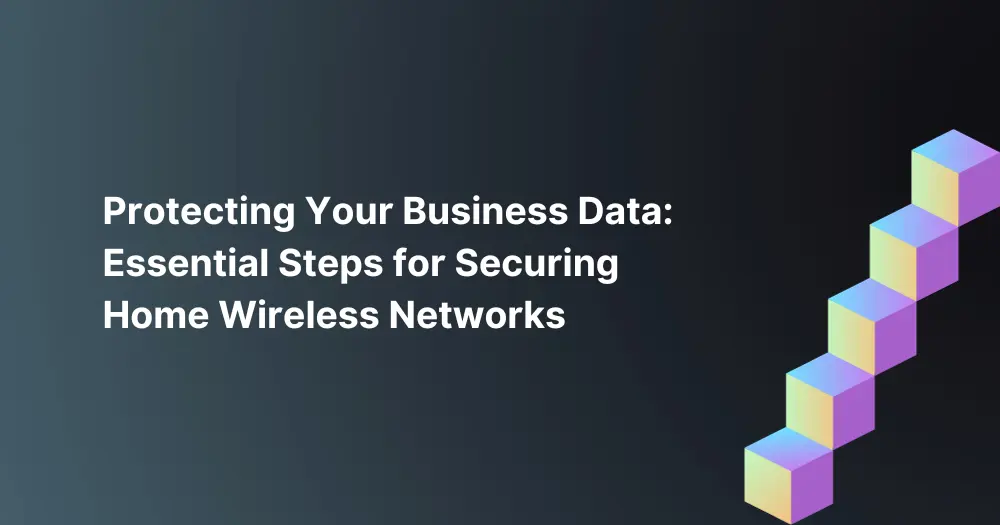
As the trend towards remote and hybrid work arrangements continues to gain momentum, it’s become increasingly crucial for businesses to pay attention to a frequently overlooked aspect of cybersecurity—the security of your employees’ home wireless networks. These networks have significantly expanded the access points for cyber threats due to the widespread adoption of remote work. As such, they present critical vulnerabilities that need to be addressed. For businesses aiming to uphold a strong cybersecurity stance, recognizing and proactively addressing this security gap is of utmost importance.
Protecting your business’s data and preventing unauthorized access requires implementing robust security measures on your employees’ home wireless networks, especially for remote work environments. Here are some essential steps to follow:
Default passwords are notoriously weak and easily guessable, making them a major vulnerability. Ensure your employees change the default passwords for the router’s administrator login and the wireless network.
Best Practices:
Encryption acts as a formidable barrier, safeguarding your data from prying eyes. Scrambling and encrypting your data renders it unreadable without the decryption key. This encryption process transforms your wireless network into a secure tunnel wherein your sensitive information remains confidential, including passwords, financial details, and personal communications. In the context of home wireless networks, enabling encryption in a home wireless network is like establishing a secure tunnel through which data can travel safely.
Best Practices:
While remote administration offers the convenience of managing router settings from anywhere, it poses a significant security risk to home wireless networks. This feature permits unauthorized individuals with internet access to control the router’s configuration. Malicious actors could exploit this vulnerability to modify critical settings, such as passwords, encryption protocols, and access restrictions, compromising the overall network security. For enhanced protection, disable remote administration unless strictly required to prevent unauthorized router configuration access.
Like software applications on devices, router firmware needs regular updates to maintain security and functionality. These updates often include patches that strengthen defenses and close potential vulnerabilities.
Best Practices:
Firewalls act as gatekeepers, meticulously scrutinizing each data packet attempting to enter or exit your network based on predefined rules. Offering robust protection against malware and viruses, they permit authorized traffic while blocking unauthorized access attempts. Encourage your employees to enable the firewall on their routers to protect against malware, viruses, and other cyber threats.
Consider implementing MAC address filtering to bolster your employees’ home network’s security. This network security measure restricts access to your network based on each device’s unique physical addresses or MAC addresses.
Creating a list of authorized MAC addresses can help your employees ensure that only devices with pre-approved access can connect to your network, making it more challenging for cybercriminals to exploit unsecured devices as entry points into your home network.
The guest network, designed to isolate visitor traffic, confines connected devices like smartphones or laptops to a separate network segment. It shields the main network from unintentionally introducing malware or viruses from visitors’ devices, reducing the risk of widespread infection.
Make a separate guest network for visitors to isolate their traffic from the main network, preventing visitors from accessing sensitive company data and reducing the risk of inadvertently introducing malware or viruses.
As the global workforce adapts to remote work, prioritizing home network security becomes a strategic investment in adapting to the changing dynamics of the modern workplace, ensuring a successful and resilient path in the digital age. By strengthening these networks, you can reduce cybersecurity threats, meet legal requirements, and demonstrate your commitment to maintaining trust and reputation.
Secure your business for success with BlackPoint. Elevate your cybersecurity measures, enhance network resilience, and ensure the safety of your employees’ remote work environments. Our tailored carrier solutions, including secure VoIP services, comprehensive network assessments, and proactive security training, empower your business to thrive in the digital era. Contact us today for a personalized consultation, and let’s build a secure foundation for your success.